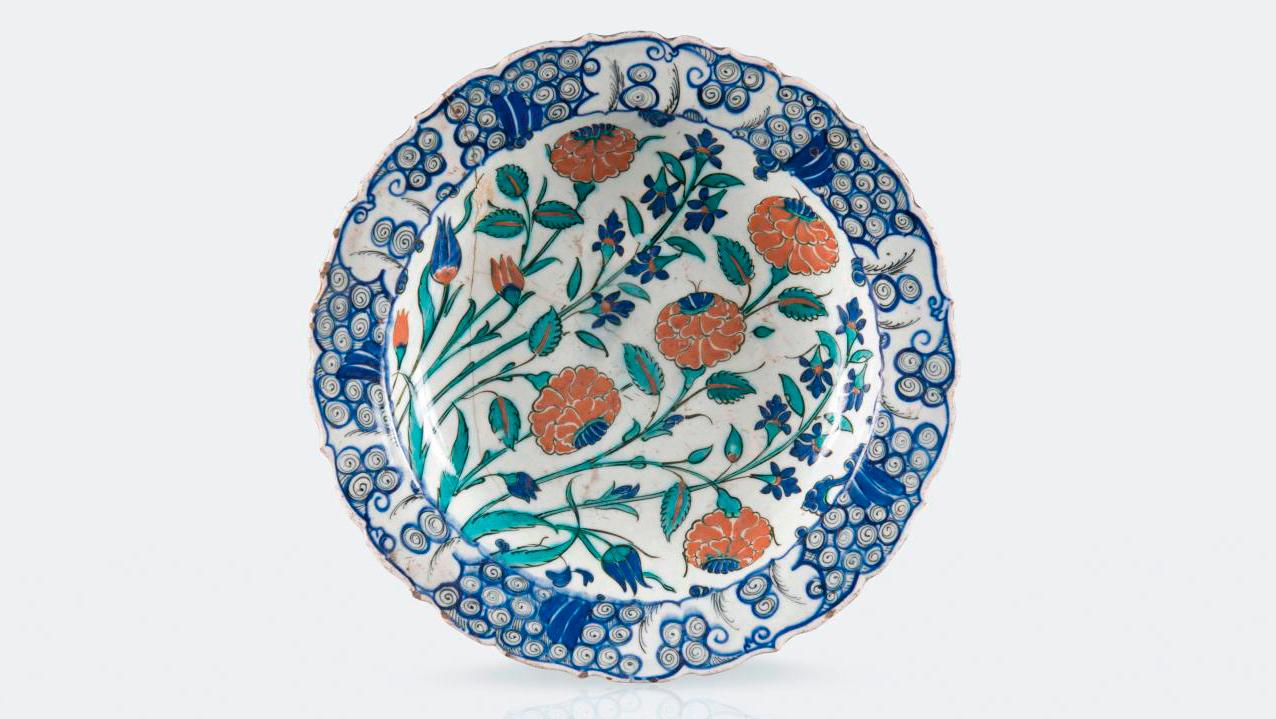Long thought to come from Damascus, Rhodes or Lindos, Iznik ceramics emerged from the shadows in the last century to reveal an Ottoman art influenced by calligraphy, illumination and the gardens of Paradise.
Ottoman Empire, 16th century. Iznik ceramic dish with floral decoration consisting of a poppy flower motif in the center and tulips on the side, diam. 30 cm/11.8 in. Marseille, October 31, 2018. De Baecque & Associés, Leclere auction house saleroom, Mr and Mrs Achdjian.
Result: €36,400
At the dawn of the 16th century, Persian potters succeeded in producing a white paste very similar to the highly sought-after kind made in China. It was not a porcelain, but a siliceous paste mixed with a high-lead frit. Combined with painted decoration under a clear glaze ensured the success of Iznik ceramics, which brought tremendous prosperity to the small city lying 100 kilometers (62 miles) from Constantinople. After the latter’s capture in 1453 by Mehmed II, an artistic policy was adopted transforming the city into a sumptuous Istanbul, with lavish architecture that was magnificently adorned. At this time blue and white Chinese porcelain was highly popular, and its sky-high cost rapidly spurred the competitive spirit of the Nakkashâne —the palace workshop—which set its sights on the workshops of Iznik, which…
com.dsi.gazette.Article : 37991
This content is for subscribers only
You still have 85% left to read.
